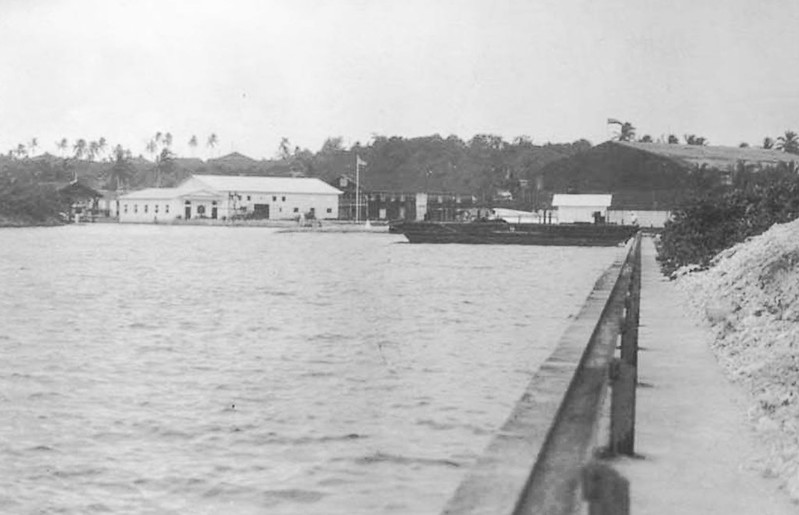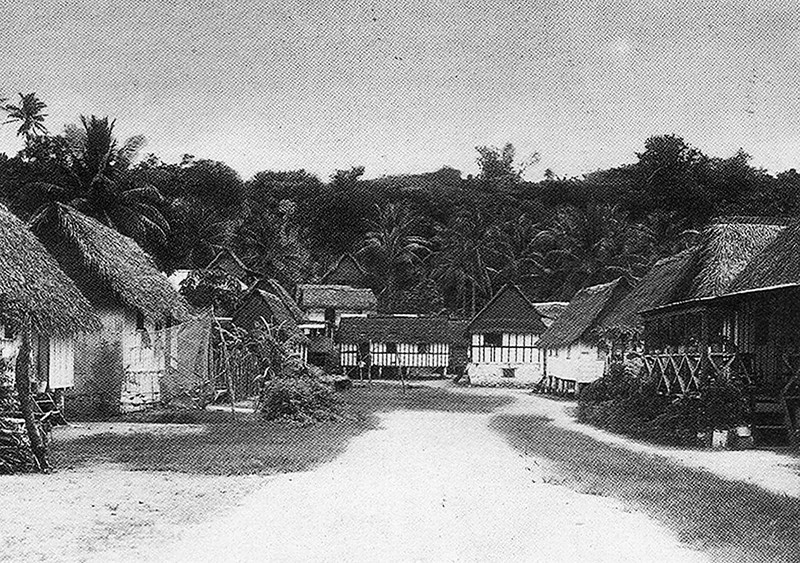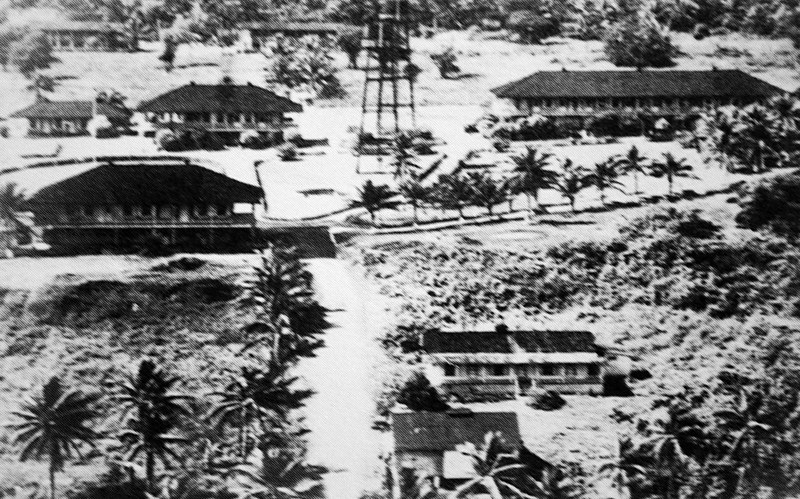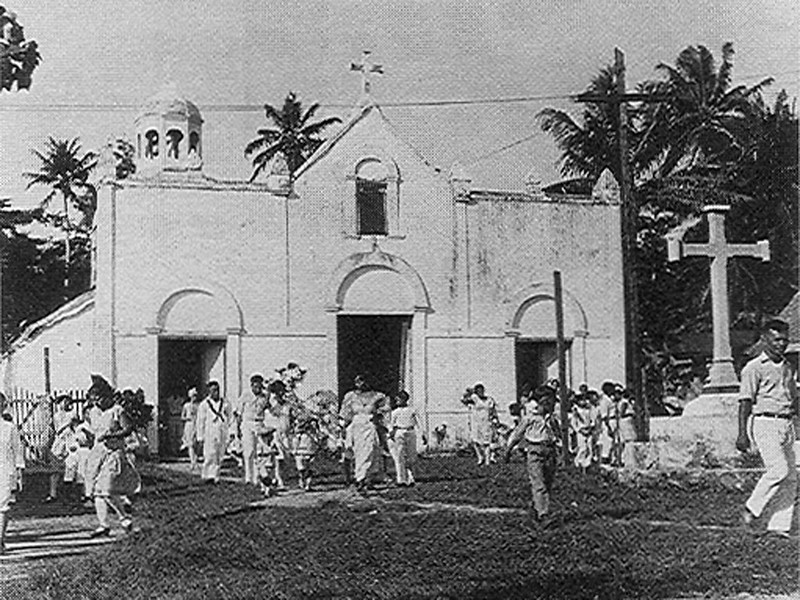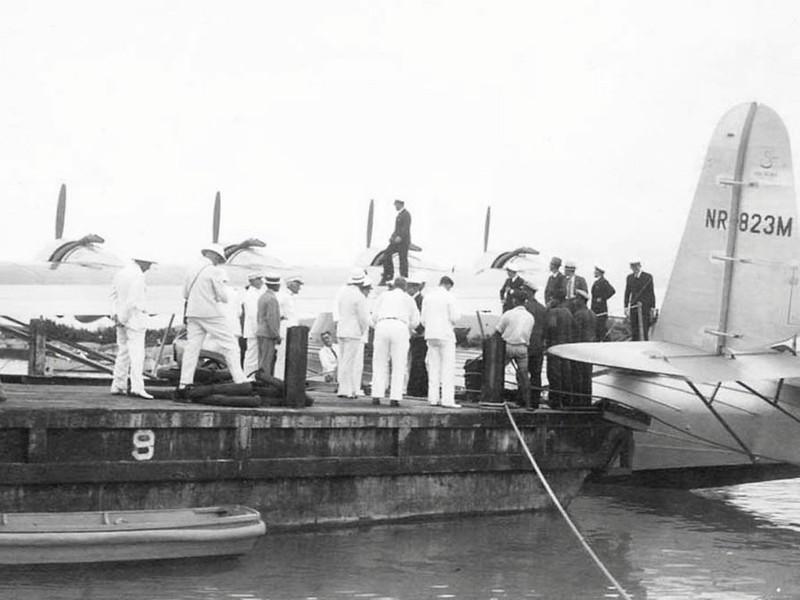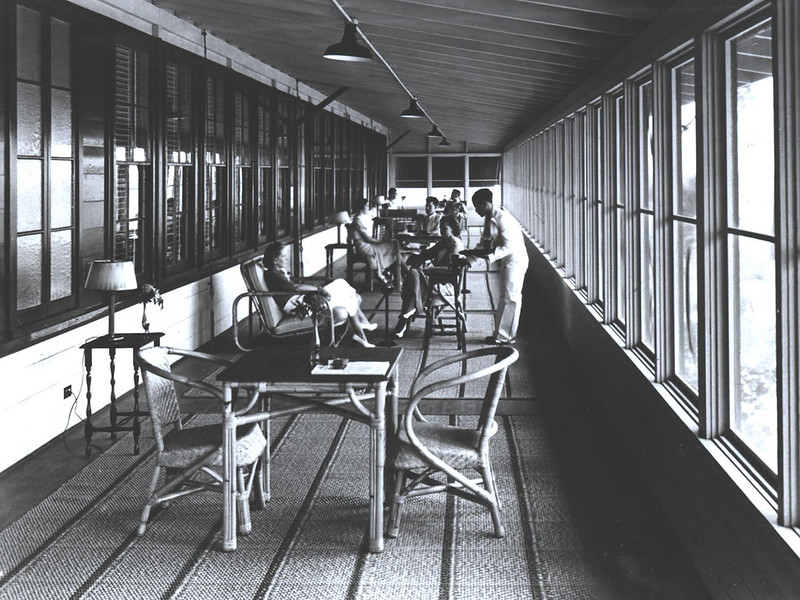Sumai (Sumay)
To view images please visit our Sumai Gallery in Flickr or the entries Back to Sumai Event and the Sumai Photographic Presentation.
Ancient Chamorro settlement
Sumai/Sumay’s history dates before the Spanish colonial period, although not much is known about its pre-contact history. Findings in a cave complex in the old village site suggest that ancient Chamorros/CHamorus dwelled in them long before the Spanish first arrived. When the Spanish proclaimed Guam as theirs, Sumai’s chieftain was said to be among those who held strong opposition to the Spanish colonizers, although the Spanish government eventually gained control. Sumai, like other villages, became centered around the Catholic church.
The Spaniards kept a settlement at Sumai, and its easy access to San Luis de Apra Harbor made it a favorite anchorage town for whalers and other sailors. Sumai grew into a thriving little port town in the 1800s. The Spaniards fortified the high cliffs behind the village and other points to protect the harbor. The guns were in disrepair, however, when the Americans sailed into Apra to capture Guam without resistance during the Spanish-American War in 1898.
The Americans also fortified the same cliff line after World War I and stationed a Marine Corps Aircraft Squadron in the area because of suspicions of Japan, which had gained the Northern Marianas after the war. However, the US dismantled the fortifications in Guam in the early 1920s.
Much of the Naval shipping operations were situated along this coastal village when the American government took over. The Trans-Pacific Cable Company anchored its station at Sumai in 1903, linking Guam with both Asia and the United States. Pan American Airways landed its China Clipper at Sumai in 1935, and built Guam’s first hotel there.
A seawall that surrounded the coastline was constructed to protect it from the pounding waves, and many of the residents enjoyed fishing and swimming along the coast every day. The Maxwell School was also constructed in the early 1930s, a small building that educated most of the children of the area. As of the 1920 census, the population of Sumai was 1,209, the second-highest population after Hagåtña. In 1923, the village became the site of Guam’s first golf course, the Sumai Golf Links, with 18 holes.
Sumai’s well-known representative in the Guam House of Assembly was Antonio B. Won Pat, a schoolteacher whose family was from the village. Won Pat became speaker of the House of Assembly in 1948 and would go on to become the first speaker of the new Guam Legislature in 1951 and Guam’s first delegate to US Congress in the 1960s – and the island’s most influential politician for several decades. Won Pat’s successor as Guam delegate to the US Congress, Gen. Ben Blaz, was also from Sumai.
People flee the Japanese
Because military shipping and communications centered around Sumai, it was one of the first areas to be bombed when the Japanese attacked on 8 December 1941. The people of Sumai fled and scattered inland to their small ranches in the jungles, with many families becoming separated. The entire population of Sumai was promptly evicted by the Japanese in the first few days of occupation to make room for a Japanese garrison, and five Chamorro girls were raped by Japanese troops in the takeover. The residents were eventually moved from camp to camp by the Japanese, some as far as Malesso’ and Manenggon hills in Yona.
Navy takes village for base
After World War II was over the Navy did not allow the Sumai residents to reclaim their homes, saying they needed the property for US Naval Base, Guam. The former Sumai residents were eventually relocated to the newly created village of Sånta Rita-Sumai. All that remains of Sumai Village is a cross from the Catholic Church, the cemetery and remains of a few of the structures.

For further reading
National Conference of State Historic Preservation Officers. “Guam | NCSHPO.” Directory.
e-Publications
Fanhasso I Taotao Sumai
Displacement, Dispossession and Survival in Guam
| Editor’s note: | Following is a masters thesis written by James Perez Viernes from University of Hawai`i in 2008. It is a comprehensive history of the village of Sumai with accounts by former Sumai residents. To cite as a reference please use: Viernes, James Perez. “Fanhasso I Taotao Sumay: Displacement, Dispossession and Survival in Guam.” Master’s Thesis, University of Hawai`i, 2008. |
Sumay Park
Videos
Timeline: Sumai to Sånta Rita-Sumai
I Hinanao Taotao Sumai
- 1819-Map from Freycinet expedition describes Apra as a village and Sumai (“Soumaye”) as a “farm.” Additionally, Sumai is referred to as a barrio or neighborhood of Hågat. Sumai farmer Luis de Torres, a mestizo informant for Freycinet, offers this area as a base station for scientific research.
- 1831-Population of Sumai and Hågat: 222.
- 1853-Spanish Captain of the Port establishes his station at Sumai.
- 1856-Smallpox epidemic kills over half of Guam’s population, and the Catholic mission in Pago is relocated to Sumai. A statue of Nuestra Señora de Guadalupe, believed to have been brought to Guam by San Vitores in 1668, is presented to the residents who adopt the Virgin of Guadalupe as their patroness.
- 1870-School for boys and girls built in Sumai.
- 1886-Guam population: 1,878; Sumai: 471.
- 1897-Population of Sumai and Hågat: 1,325.
- 1898-US Captain Henry Glass raises the US flag at Fort Santa Cruz during Spanish-American War, claiming Guam for the United States. The American Administration of Guam falls under the authority of the US Navy.
- 1901-US map of Sumai and Orote peninsula shows residential blocks with about 50 houses, seven streets and inland coconut groves. Two roads connect Sumai with Orote point and Dadi Beach. Aside from Hagåtña, most American colonists lived in Sumai. The Sumai-Hagåtña road connecting the two villages is the first asphalt road on the island.
- 1903-US-based Pacific Commercial Cable Company begins construction of cable station, connecting Guam to Midway, Yap, the Philippines and Yokohama.
- 1912-The Sumai cut off road is built to shorten the distance between the cable station and naval facilities, as well as to make travel to and through Sumai easier. Apra Harbor is closed to most foreign commercial vessels in the interest of US security.
- 1914-A Marine detachment for island defense arrives and moves into tents in Sumai village.
- 1921-US Marine Barracks construction is completed on the plateau above Sumai; work begins on a hangar, sea ramps and a shop building.
- 1922-Dredged materials from Apra Harbor are placed along the coastline of Sumai. The village no longer occupies the shoreline.
- 1923-First golf course in Guam is opened at Sumai.
- 1931-US Marine presence reduced to 10 officers and 121 enlisted men.
- 1935-Pan American Airways Clipper service acquires rights to use former Marine Aviation facilities at Sumai. Sumai becomes not only a home to the US Marine Barracks, but also boasts a floating dry dock, the seawall, the Standard Oil Company’s storage tanks, and the Maxwell School for elite boys and girls.
- 1936-Pan American Airways builds a 20-room hotel in Sumai called Skyways Inn to accommodate world travelers.
- 1941-Sumai population: 1,997. It is the second most populated village in Guam, next to Hagåtña.
- 8 December 1941 Sumai is the first village in Guam to be bombed by Japanese invading forces. The people of Sumai take refuge in nearby ranches, primarily in Apla (near present-day Navy Exchange and Commissary.
- 1942-1944-Japanese forces remove Sumai residents for the construction of an airfield on Orote; US Marine barracks and village residences are used as housing for Japanese soldiers. The people of Sumai are forbidden to return to their village without permission. Santa Marian Guadalupe Church is converted to an auditorium and meetinghouse.
- 28 July 1944-US Marines destroy Japanese defenses on Orote. Much of Sumai is reduced to rubble.
- July 1944-The people of Sumai living in Apla are forced to march to the Manenggon Valley concentration camp in anticipation of the American recapture of Guam. Thirty-four people from Sumai and Hågat are herded into caves at Fena and killed with grenades by the Japanese.
- 21 July 1944-American military forces recapture Guam from the Japanese. Shortly after, the people of Sumai are transferred from Manenggon to a camp at Hågat.
- While Sumai remains off limits to its residents, the residents eventually make their way back to Apla, building make-shift homes as they await permission to return to their village.
- The US military secures Sumai as a base to coordinate attacks against Japan. Admiral Chester W. Nimitz requests 75,700 acres, or 55% of the island’s land for military use. Sumai in its entirety is included in this request.
- 1945-Sumai residents living in Apla are given two resettlement options by the US military: move to Hågat, or move to a temporary refugee camp. The people of Sumai chose the second option.
- 1945-1946-The people of Sumai slowly begin moving from Apla to the “temporary refugee camp of Sånta Rita.” The area is undeveloped with no roads, running water, or electricity. Farming is almost impossible because of the hilly terrain, and the inland location makes fishing difficult.
- 1946-US Congress passes Public Law 594: The Guam Acquisition of Lands Act authorizing the US Navy to acquire any and all land necessary for use by the United States.
- 1948-Civil Case No. 5-49 is filed in the Superior Court of Guam. Known as the “Declaration of Taking,” the case declares that Sumai in its entirety, as well as parts of Piti and Hågat, would be seized by the US military. In total, 2,471 acres of land is acquired from Chamorro landowners, with little or no compensation. In Sumai, a total of 345 privately and commercially owned lots of land are taken; hundreds of villagers are permanently exiled from their village.
- 1952-Fr. Mel McCormack and the people of Sånta Rita complete construction of the Sånta Rita church. The people of Sånta Rita dedicate the new church to the former patroness of Sumai, Our Lady of Guadalupe, while Sånta Rita is adopted as a co-patroness of the village.
- 1961-Former Sumai residents are allowed to return to the Sumai Cemetery on All Souls’ Day after twenty years of being forbidden to celebrate the holiday there.
- 1972-The Guam Legislature adopts a resolution recognizing the suffering of the people of Sumai during World War II and its aftermath. Construction of a 200-acre housing subdivision in Sånta Rita to be called “New Sumai” begins to help the people of Sumai develop their new community. This area presently is referred to as the Santa Rosa Subdivision, or Hyundai.
- 1983-Sumai Memorial Park is dedicated at the site of the former Santa Marian Guadalupe Catholic Church in Sumai.
- 1988-Sånta Rita-Sumai Peace Memorial monument is constructed in the center of the village across the street from the church to commemorate the people of Sumai and their establishment of a new community in Sånta Rita-Sumai.

